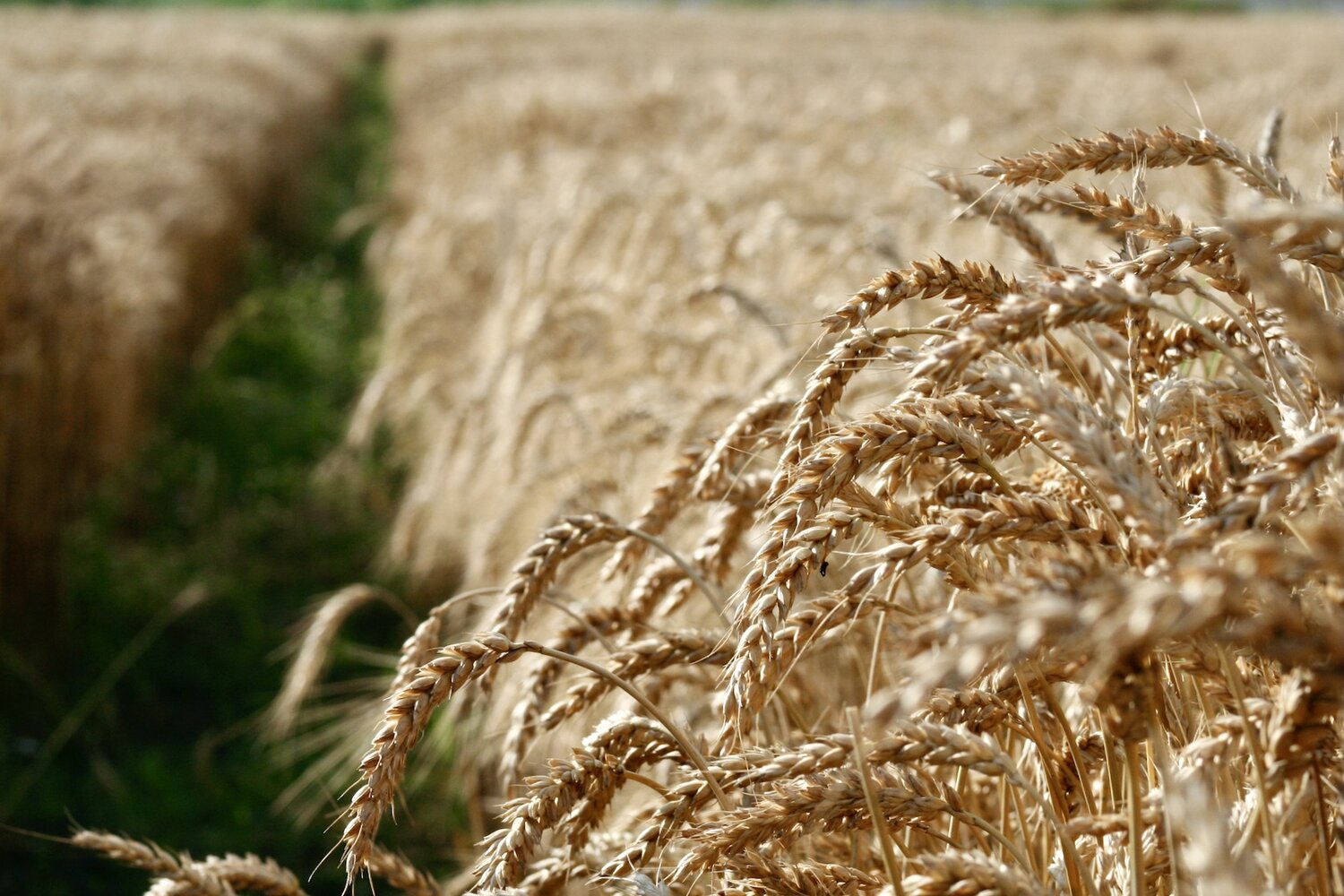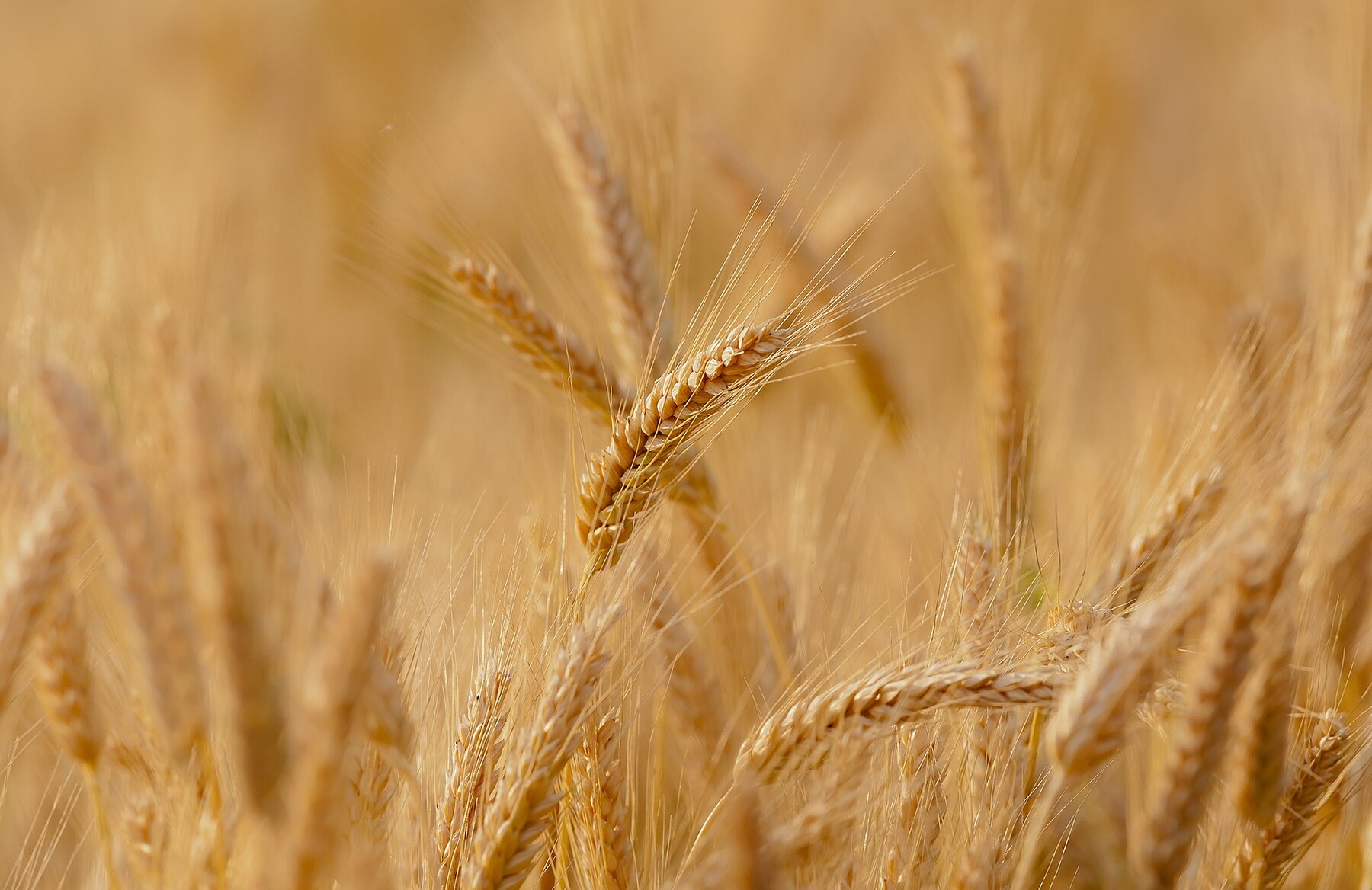Durum Wheat/Bread Wheat
Why wheat?
Wheat (Triticum sp.) is one of the most widely grown food grain crops, feeding about 35% of the world’s population. Though five domesticated Triticum taxa, diploid T. monococcum, tetraploid T. dicoccon and T. durum, and hexaploid T. aestivum and T. spelta are known under cultivation, the modern wheat production is primarily based on bread wheat and durum wheat, accounting for 90–95% and 5–10% of global wheat production, respectively.
Bread wheat originated about 8,000 years ago in the area of North-western Iran and the South-western Caspian Sea. The center of origin of durum wheat is in the Southern Levantine, but a second independent origin could also be in Ethiopia.
Bread wheat is mainly used as flour for various flatbreads, sourdough breads, and other baked goods. Durum wheat is a major staple crop that has been cultivated for millenniaIn in the Southern Mediterranean, Ethiopia, South Asia, and the Saharan oasis and is used for many traditional dishes. However, its production now has become global to support the USD 16 billion pasta market.
What we achieved
Collecting
- 364 samples of 23 wheat crop wild relative (CWR) species were collected in eight countries: Armenia, Azerbaijan, Cyprus, Georgia, Italy, Lebanon, Pakistan and Spain.
Pre-breeding and evaluation
- 28 durum wheat lines derived from crop wild relatives developed and evaluated.
- New technique of Kompetitive Allele Specific PCR (KASP) markers used to identify and characterize introgressions from CWR into elite durum wheat backgrounds in 1,293 samples. These markers are being made freely available for use by other researchers.
- Segregating (homozygous) durum wheat introgressed lines (ILs) will be made freely available worldwide for use in breeding programs.
- Stable (heterozygous) ILs were supplied to the Indian Institute of Wheat and Barley Research, the International Center for Agricultural Research in the Dry Areas (ICARDA), Morocco, and the International Maize and Wheat Improvement Center (CIMMYT), Mexico, who carried out further assessments and selections.
- ILs were identified that had interesting phenotypes and grain quality and resistance to yellow rust.
- Two CWR-derived durum wheat lines are undergoing national variety testing in Morocco.
- Two CWR-derived durum wheat lines have been officially released in Lebanon and two have been released in Senegal for commercial use across West Africa.

Project partners
Collecting
- Armenian Botanical Society, Yerevan, Armenia
- Genetic Resources Institute, Azerbaijan National Academy of Sciences, Baku, Azerbaijan
- Agricultural Research Institute, Ministry of Agriculture, Natural Resources and Environment, Nicosia, Cyprus
- Botanical Institute, Ilia State University, Tbilisi, Georgia
- University of Pavia, Italy
- Lebanon Agricultural Research Institute, Rayak, Lebanon
- Plant Genetic Resources Program, Bio-Resources Conservation Institute, Islamabad, Pakistan
- National Institute for Agricultural and Food Research and Technology, Madrid, Spain
Pre-breeding and evaluation
Lead Institute: University of Nottingham, UK (pre-breeding); ICARDA, Morocco (evaluation)
Partners:
- International Maize and Wheat Improvement Center (CIMMYT), Texcoco, Mexico
- Institute National de la Recherche Agronomique, Rabat, Morocco
- Institut Sénégalais de Recherches Agricole, Senegal
- Ethiopian Institute of Agricultural Research, Addis Ababa, Ethiopia
- Lebanon Agricultural Research Institute, Rayak, Lebanon
Wheat key collections, materials and data
Wheat collections
- The largest wheat collection is conserved at the International Maize and Wheat Improvement Center (CIMMYT) in Mexico.
- Of the 364 samples of wheat wild relatives collected, 347 are conserved in the Millennium Seed Bank (December 2021).
- The Genesys PGR database also includes information about wheat accessions in genebanks worldwide.
Pre-breeding materials
- Nineteen pre-breeding lines of durum wheat derived from wild species and relatives are conserved in the ICARDA genebank and are available for sharing through the Standard Material Transfer Agreement (SMTA).
- A selection of the most useful pre-breeding materials is also maintained by ICARDA breeders and are available for sharing through SMTA on request.
Data
- All data from the CWR wheat pre-breeding and evaluation projects are available in the Germinate wheat database. Primer data will be included in 2022.
Durum Wheat/Bread Wheat stories
Crop Trust stories
- New Drought-tolerant Durum Wheat Could Transform Farming in Dry Regions. https://www.croptrust.org/resources/new-drought-tolerant-durum-wheat-could-transform-farming-in-dry-regions/. 7 December 2022.
- Selection by stone. https://www.croptrust.org/news-events/news/selection-by-stone-1/. 27 August 2019.
- A Wild Way to Boost Wheat Yields. https://www.croptrust.org/news-events/news/a-wild-way-to-boost-wheat-yields/. 31 March 2021.
- Zinc-Biofortified Wheat: Harnessing Genetic Diversity for Improved Nutritional Quality. https://www.croptrust.org/news-events/news/zinc-biofortified-wheat-harnessing-genetic-diversity-for-improved-nutritional-quality/. 29 May 2017.
- Cyprus and Italy complete crop wild relative seed collecting. https://www.cwrdiversity.org/cyprus-and-italy-complete-crop-wild-relative-seed-collecting/. 10 November 2016.
- Adding new diversity into an ancient crop. https://www.cwrdiversity.org/durum-pre-breeding/. 2 March 2018.
- Planet Wheat. https://www.croptrust.org/news-events/news/planet-wheat/. 1 July 2014.
Partner stories
- Using wild relatives to toughen up staple crops. https://www.icarda.org/media/blog/using-wild-relatives-toughen-staple-crops. 18 April 2021.
- Selection by stone. https://foodtank.com/news/2019/08/selection-by-stone/. August 2019.
- Opinion: The last crop before the desert. https://foodtank.com/news/2020/03/opinion-the-last-crop-before-the-desert/. March 2020.
Relevant publications
- Zaïma, M., El Hassounia, K., Gambac, F., Filali-Maltoua, A., Belkadi, B., Sourour, A., Amri, A., Nachit, M., Taghouti, M., Bassi, F.M. 2017. Wide crosses of durum wheat (Triticum durum Desf.) reveal good disease resistance, yield stability, and industrial quality across Mediterranean sites. Field Crops Research 214: 219–227.
- Othmani, M., Hubbart-Edwards, S., Yang, C., Scholefield, D., Ashling, S., Yahyaoui, A., Gustafson, P., Singh, P.K., King, I.P., King, J. 2019. The use of pentaploid crosses for the introgression of Amblyopyrum muticum and d-genome chromosome segments into durum wheat. Frontiers in Plant Science: Plant Breeding https://doi.org/10.3389/fpls.2019.01110
- Alary, V., Yigezu, Y.A., Bassi, F.M. 2020. Participatory farmers-weighted selection (PWS) indices to raise adoption of durum cultivars. Crop Breeding, Genetics and Genomics 2(3): e200014. https://doi.org/10.20900/cbgg20200014.
- Aberkane, H., Amri, A., Belkadi, B., Filali-Maltouf,A., Kehel,Z., Tahir,I.S.A., Meheesi,S., Tsivelikas, A. 2021. Evaluation of durum wheat lines derived from interspecific crosses under drought and heat stress. Crop Science 61: 119–136.
- Aberkane, H., Belkadi, B., Kehel, Z., Filali-Maltouf, A., Tahir, I.S.A., Meheesi, S., Amri, A. 2021. Assessment of drought and heat tolerance of durum wheat lines derived from interspecific crosses using physiological parameters and stress indices. Agronomy 11(4): 695. https://doi.org/10.3390/agronomy11040695.
- El Haddad, N., Kabbaj, H., Zaïm, M., El Hassouni, K., Sall, A.T., Azouz, M., Ortiz, R., Baum, M., Amri, A., Gamba, F., Bassi, F.M. 2021. Crop wild relatives in durum wheat breeding: Drift or thrift? Crop Science: 61: 37–54.
- El Haddad, N., Sanchez-Garcia, M., Visioni, A., Jilal, A., El Amil, R., Sall, A.T., Lagesse, W., Kumar, S. and Bassi, F.M. 2021. Crop wild relatives crosses: multi-location assessment in durum wheat, barley, and lentil. Agronomy: 11(11), p.2283. https://doi.org/10.3390/agronomy11112283.

